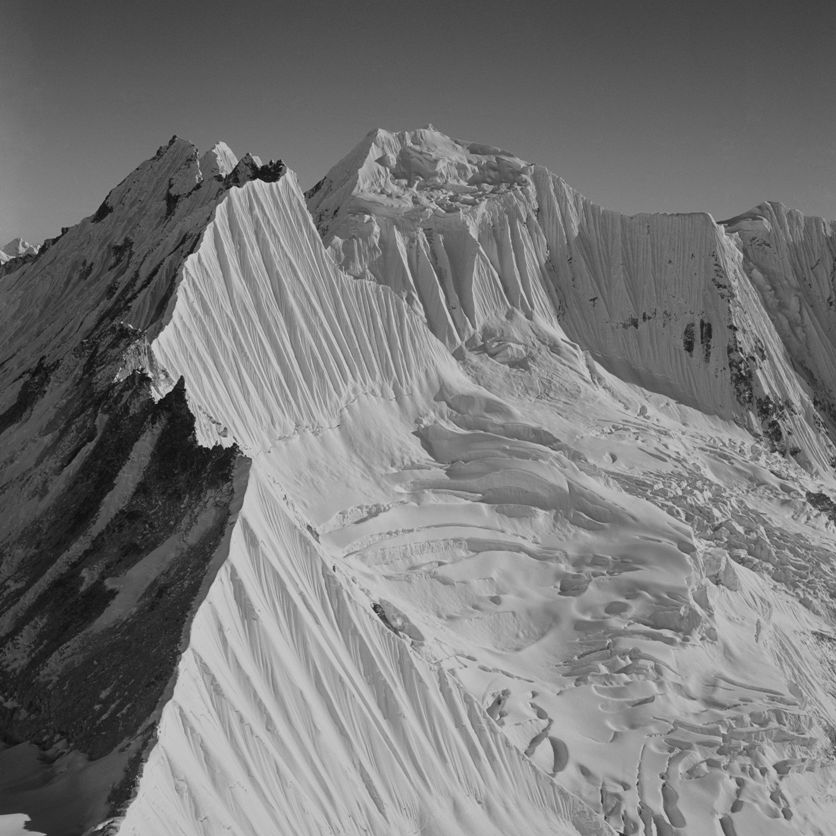|
George Irving Bell Gallery |

|
|
George Irving Bell Gallery |

|
When my father died, I remembered this photo fondly, and I wanted to find the negative and also find out what mountain it was. The first task was surprisingly easy, I managed to find the negative relatively quickly after searching through my father's photographic images. My mother also seemed to think it was taken in Peru, due to the distinctive fluting on the faces. However, the negative was inside a sleeve labeled "Minor Peaks new Ama Dablam", which suggested the Himalaya and specifically the Everest region. But perhaps this negative was placed in an old sleeve and the text had nothing to do with the photograph.
In 2013, I posted the photograph to a climber's forum (supertopo) in the hope that someone would recognise the mountains. Someone suggested that I fly around in Google Earth, maybe near Ama Dablam and in Peru. I did and almost immediately I recognised the peak a few miles SE of Ama Dablam. Indeed, the label on the sleeve was correct all the time, and the photograph was not taken in Peru and it was not an aerial photograph.
The photograph is taken near a well-known pass south of Ama Dablam, Mingbo La. The photograph was taken from near Mingbo La looking south. The peak in the top center of the photo has no official name that I have found, it is the easternmost peak of Malangphutang (also spelled Malangphulang), 27deg48'58.18", 86deg53'20.85'. It is also called "Fluted Peak". The eastern summit is 3.5 miles SSE of Ama Dablam. The main summit of Malangphutang is 4 miles due south of Ama Dablam. On one map it's height was identified as 6439m (21,125'). The main summit of Malangphutang is the "higher peak to the right", 6573m.
The final question was how my father ever was near Ama Dablam, since as far as I knew he had never attempted to climb it or been anywhere near the south side of Ama Dablam (which is the opposite side from where Ama Dablam is normally viewed). The only times my father had been to the Khumbu was in 1955 on an expedition to Lhotse, as well as in 1983 on a trek with myself and my mother, and it was definitely not taken on the 1983 trip. While Ama Dablam is a few miles from Lhotse, the south side of Ama Dablam would be on the opposite side from Lhotse.
I read the expedition account of the attempt on Lhotse in the 1956 American Alpine Journal, and there is no mention of Ama Dablam. However, in the same volume I noticed an account by Fred Beckey "Solo Khumbu Climbs: First Ascents After Lhotse". Jackpot! This document descibes a few ascents after the official end of the Lhotse expedition by Fred Beckey, George Bell and Dick McGowan. Mystery solved. The photograph was taken in 1955, after the attempt on Lhotse.